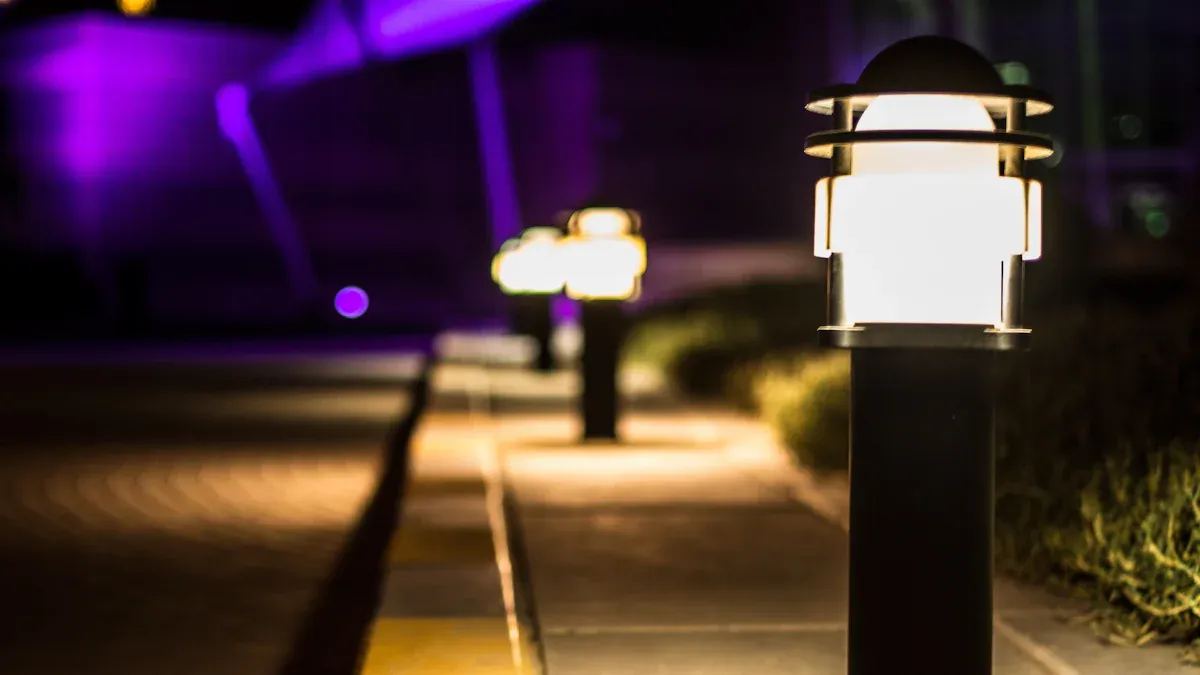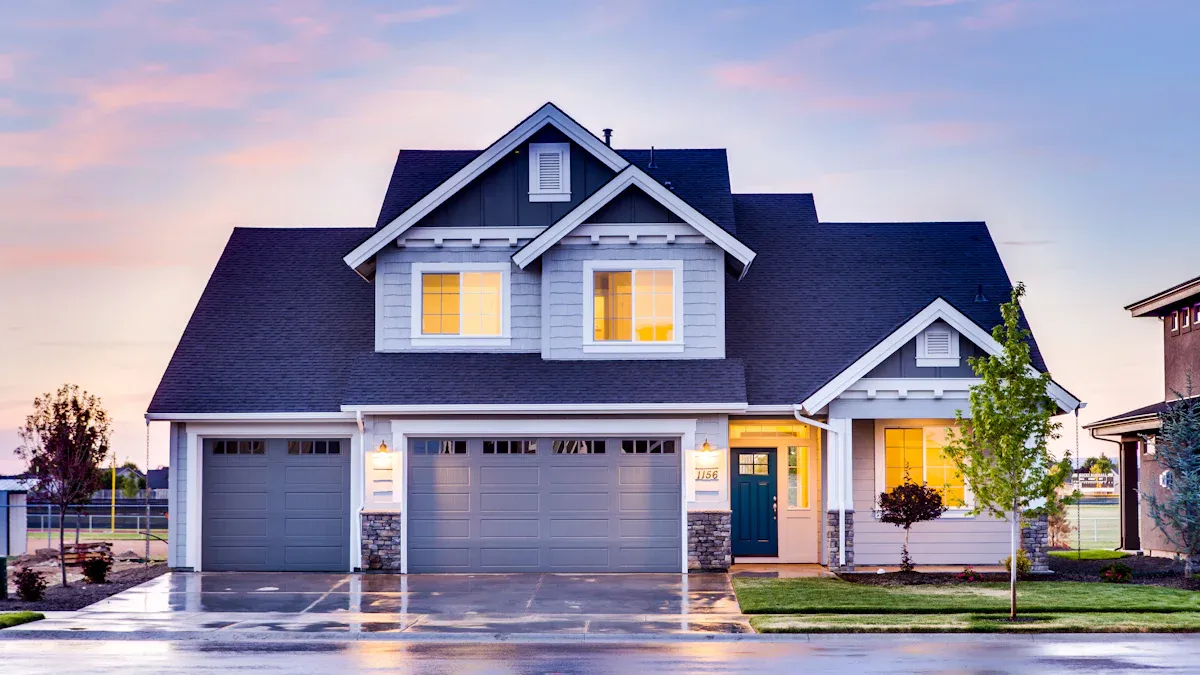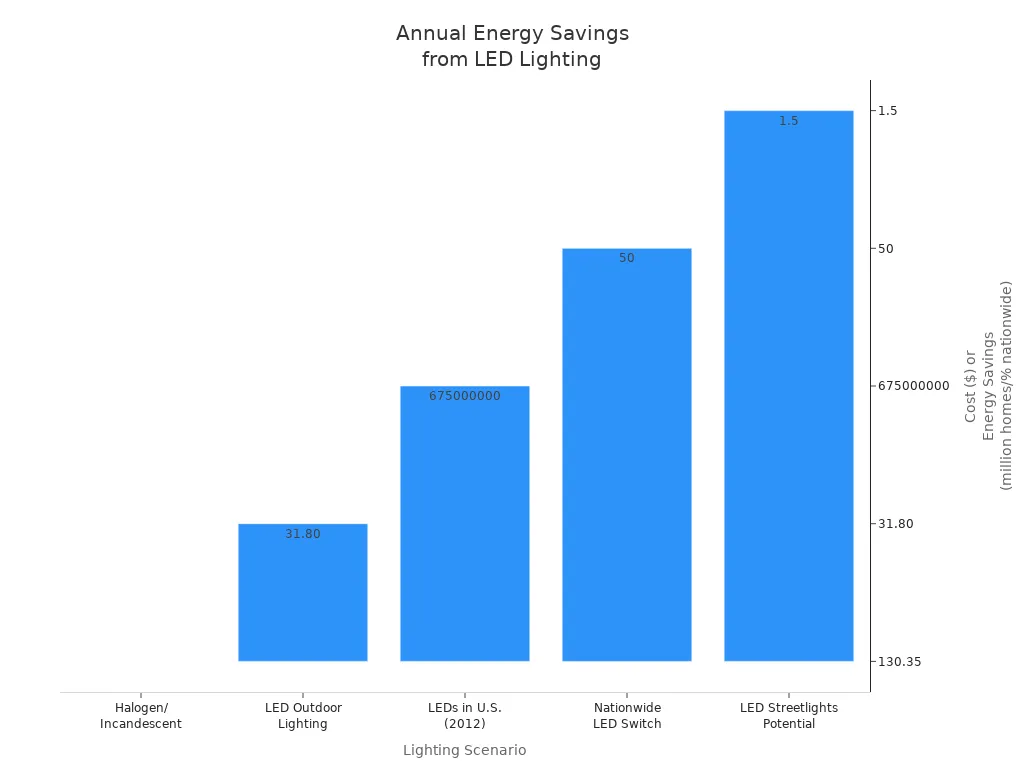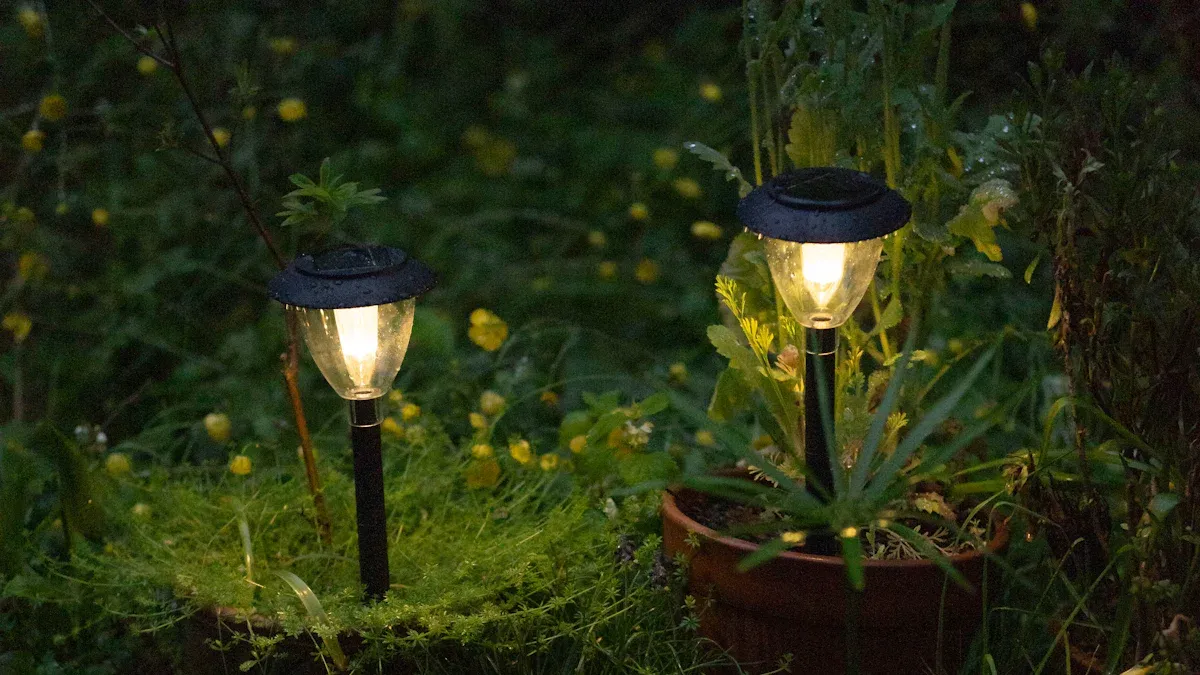How to Choose the Perfect Outdoor Lamps with LED Technology for Your Home

Choosing the best outdoor lamps with LED light technology means you balance style, durability, brightness, energy efficiency, and placement to fit your home’s unique needs. At our About Us page, you’ll learn how our products are designed to enhance your home’s safety, create a welcoming atmosphere, and highlight your garden’s beauty. Whether you’re looking for increased security, low maintenance, or a fresh new look for your outdoor spaces, our LED light outdoor lamps are the perfect solution. Many homeowners prefer LED outdoor lamps because they consume less energy, last longer, and come with smart features like timers and motion sensors. Outdoor lighting not only improves your home’s appearance but also optimizes the functionality of your lights. Ready to transform your outdoor space with the right product?
What do you want your outdoor lamps to do for your home?
Are you aiming for enhanced safety, a better ambiance, or just a stylish new look?
Key Takeaways
LED outdoor lamps use less energy and save you money. They also last much longer than regular bulbs. - Pick outdoor lights that fit your needs, like safety or making your yard look nice. You can also use them to show off special parts of your yard. - Choose strong fixtures that can handle bad weather. Make sure they have safety certifications so they last a long time. - Match how bright your lights are and their color to each outdoor space. This helps you see well and feel comfortable. - Think about where to put each light before you start. You can use smart controls to make your outdoor lights work better and be easier to use.
Outdoor Lighting Benefits

Energy Efficiency
You want your outdoor lighting to shine bright without draining your wallet. That’s where LED light bulbs come in. They use up to 90% less energy than old incandescent or halogen bulbs. This means you can light up your yard, driveway, or patio and still save money every year. Take a look at this table to see how much you can save by switching to LED outdoor lighting:
Lighting Type | Energy Use Compared to Halogen/Incandescent | Annual Cost (Example Residential System) | Energy Savings | Additional Notes |
|---|---|---|---|---|
Halogen/Incandescent | 100% (baseline) | $130.35/year | N/A | Needs more wiring and bigger transformers |
LED Outdoor Lighting | 15-20% of halogen/incandescent | $31.80/year | ~$98.55/year saved | Uses less wire, smaller transformers, lasts long |
Lighting makes up about 15% of your home’s electricity use. By switching to LED light bulbs, you could save around $225 each year. LEDs also help the planet. They use less electricity, last longer, and don’t have toxic chemicals like mercury. This means less waste and a smaller carbon footprint. Here’s a quick look at the impact:
LEDs use up to 80% less energy than traditional lighting.
They last longer, so you throw away fewer bulbs.
No mercury means safer disposal.
Solar-powered LED outdoor lighting cuts your carbon footprint even more.

Longevity
You don’t want to climb a ladder every year to change bulbs. LED outdoor lighting lasts much longer than old bulbs. Most LED light bulbs work for 15,000 to 50,000 hours. That’s about 11 years if you use them all the time, or up to 20 years if you use them for a few hours each night. Incandescent bulbs only last about 1,000 hours. Halogen bulbs burn out even faster. With LED outdoor lighting, you spend less time and money on replacements.
Safety
You want your home to feel safe at night. Outdoor lighting helps you see steps, walkways, and driveways. It can also make your home look lived-in, which may help deter crime. But brighter isn’t always better. Studies show that too much light or glare can actually make it harder to see and may not stop crime. The best outdoor lighting uses LED light bulbs in a smart way—enough to see clearly, but not so much that it blinds you or your neighbors. Well-placed outdoor lighting also helps security cameras work better and makes your yard feel welcoming.
Tip: Combine outdoor lighting with other safety features like fences or cameras for the best results.
The benefits of outdoor lighting go beyond just looks. You save money, help the environment, and make your home safer and more inviting.
Choosing Outdoor Lamps
Lighting Needs
Outdoor lighting should help you, not just look nice. First, think about what you want your outdoor lamps to do. Do you need more safety, a friendly feeling, or to show off your garden? Maybe you want bright lights for your driveway. Softer lights work well for patios. Each spot around your house has its own job. Your lighting should fit that job.
Here are some tips to help you choose:
Decide if you want lights for safety, security, or to show off things like trees or paths.
Think about how big your outdoor space is. Big yards need more lights. Small patios might only need a few.
Pick the right kind of outdoor light fixtures. Floodlights are good for big spaces. Pathway lights help people walk safely. Motion sensors add extra security. Step lights make stairs safer.
Make sure your outdoor lamps can handle rain if they will get wet.
Ask experts for help if you want your lights to match your home and yard.
Tip: Put pathway lights 6 to 8 feet apart for even light. Hang wall lights at about one-fourth to one-third the height of your door for the best look.
Check out this table to see what to think about for each part of your outdoor lighting:
Area | What to Think About |
|---|---|
Pathways & Driveways | Space lights evenly, use marker lights, add motion sensors for safety |
Patios & Backyards | Use soft, bright, and special lights for relaxing and fun |
Architectural Features | Shine lights up on columns, rooflines, windows, and doors to make them stand out |
Gardens & Water Features | Shine lights up on trees, bushes, and water with special lights |
Safety & Security | Use layers of lights and smart controls for better vision and peace of mind |
When you pick outdoor lights, balance how bright they are. Too much light can hurt your eyes and make it hard to see. Not enough light can leave dark spots and make things unsafe. Always think about what each light is for before you put it in.
Style and Size
Outdoor lamps do more than just light up your yard. They also make your home look better. The style and size of your outdoor lights should match your house. If your house is modern, metal finishes and simple shapes look nice. For a farmhouse, lantern-style lights or cast aluminum fixtures work well. Classic homes look good with old-fashioned designs and warm colors.
Here are some ways to match style and size:
Pick outdoor lights that fit your home’s look. Modern homes look good with shiny or simple lights. Rustic homes look nice with iron or old-looking finishes.
Choose the right size for your outdoor lamps. Wall lights should be about one-fourth to one-third as tall as your door. Hang them about 66 inches from the ground.
Make sure your outdoor lights fit your house. Big doors need bigger lights. Small doors look better with smaller lights.
Choose finishes and materials that last in your weather. Brass, aluminum, and strong metals are good for outdoor lights.
Note: Matching your outdoor lamps to your home’s style makes your house feel friendly and helps it stand out.
Decorative Features
You can use outdoor lighting to show off your style. New LED outdoor lamps have many cool features that add fun and charm. You do not have to pick plain lights. Try using different styles and shapes to make your outdoor lighting special.
Popular decorative features include:
Lantern-style path lights for a classic look and safe walking.
String lights above for a magical feeling.
Paper lanterns in many sizes for a calm mood.
Two hanging lanterns for balance and more light.
Stained-glass pendants with colorful glass for art.
Brass bowl pendant lights for a modern touch.
Ceiling lights that are flat for small spaces.
Lights under tables for a soft glow at dinner.
Geometric lights with bold shapes for a modern look.
Solar lights on fences for saving energy and brightening your yard.
DIY birdcage lanterns with string lights for a fun project.
Three-shade pendant lights for big patios.
Moroccan pendant lights with fancy metal and colorful glass.
Tree uplighting to show off your plants and add drama.
Modern art sconces with circles and spirals for a cool look.
Tip: Mix and match these features to make your home feel friendly and look great from the street.
When you pick outdoor lights, think about how they work and how they look. Fun features can make your home feel cozy and help you enjoy your yard even more.
Outdoor Lighting Fixtures Durability
Weather Resistance
When you pick outdoor lighting, you want it to last through rain, sun, wind, and even snow. The material of your outdoor lighting fixtures matters a lot. Here are some common choices:
Aluminum is lightweight and rust-resistant. It works well in most outdoor spaces.
Stainless steel costs more but stands up to salty air, making it great for coastal homes.
Brass resists corrosion and gets a nice patina over time. It also works well near the ocean.
Borosilicate glass is clear and tough but can break if hit hard.
Polycarbonate is light and tough but may turn yellow in strong sunlight.
Resin is light and handles rain, sun, and wind well.
You should also check the IP rating on your outdoor lighting fixtures. This rating tells you how well the fixture keeps out dust and water. Here’s a quick guide:
IP Rating | Protection Level Description | Typical Outdoor LED Lamp Use Case |
|---|---|---|
IP44 | Stops small objects and water splashes | Good for covered porches |
IP65 | Keeps out dust and water jets | Great for open outdoor areas |
IP66 | Blocks dust and strong water jets | Handles heavy rain |
IP67 | Dust-tight and safe for short dips in water | Near pools or ponds |
IP68 | Safe for long-term underwater use | Underwater lights |
If you live where it rains a lot or near the ocean, pick outdoor lighting fixtures with higher IP ratings and strong materials.
Quality and Ratings
You want your outdoor lighting to be safe and reliable. Look for UL, ETL, or CSA certifications on your lighting fixtures. These marks mean the product passed tough tests for things like fire, water, and electrical safety. UL listings also tell you if a fixture is safe for dry, damp, or wet places. Always match the rating to where you plan to use the light.
UL certification means the fixture meets strict safety rules.
ETL and CSA are also trusted safety marks.
These certifications help you follow building codes and may help with insurance.
Tip: Always check for these marks before you buy outdoor lighting. They help keep your home safe.
Installation and Safety
Good installation keeps your outdoor lighting working well and safe. Here are some common mistakes to avoid:
Rushing the planning can lead to mismatched parts and safety risks.
Picking the wrong type of LED for outdoor use can cause problems.
Using controls that do not match your lights can make them fail.
Choosing the wrong power supply or putting it outside without a cover can be dangerous.
Bad wiring or loose connections can cause fires or make your lights stop working.
You should also check your outdoor lighting fixtures from time to time. Clean them, look for loose wires, and make sure nothing blocks the light. LEDs last a long time and need less care than old bulbs, but a quick check keeps everything safe and bright.
Note: If you are not sure about wiring or installation, ask a pro for help. Safety comes first!
Brightness and Color for Outdoor Lights
Lumens and Coverage
You want your outdoor lights to be bright enough. Lumens tell you how much light a bulb gives off. If your lights are too dim, you might not see well. You could trip or miss things. If your lights are too bright, they can hurt your eyes. They also waste energy. Here is a table that shows how many lumens you need for each area:
Outdoor Area | Recommended Lumen Output |
|---|---|
Pathways, Stairs, Entrances | |
Driveways | 500 - 1000 lumens |
Patios | 250 - 400 lumens |
Different fixtures need different amounts of light. Here is another table to help you:
Fixture Type | Recommended Lumen Output | Typical Use Case |
|---|---|---|
Path Lights | 100 - 200 lumens | Pathways and walkways |
Hardscape Lights | 50 - 185 lumens | Patios, walls, features |
Flood Lights | 700 - 1300 lumens | Driveways, open spaces |
If you use several small led light bulbs, the light spreads out better. This helps you see more clearly. It also makes your yard safer and more comfortable.
Color Temperature
Color temperature changes how your outdoor lights look and feel. Warm light is under 3000K. It makes your yard feel cozy and relaxing. Warm light is good for patios and gardens. Neutral light is between 3500K and 4500K. It looks natural and works well for paths and stairs. Cool light is 5000K or higher. It is bright and helps you see better in dark places.
Here is what color temperature does for your yard:
Warm light makes your yard feel friendly and good for hanging out.
Neutral light looks nice and helps you see on paths and steps.
Cool light helps you see better in dark spots and driveways.
The right color temperature can make your garden or house stand out.
Studies show warm light helps you relax. Cool light helps you stay alert. Pick the color temperature that fits what you want for your yard.
Tip: Use warm led light bulbs for patios and gardens. Use cool ones for driveways or places you want to keep safe.
Directionality
Directionality means where your outdoor lights shine. If you point your led light bulbs down, you light up the ground. This helps you see better and stops light from going where you do not want it. Shielded fixtures keep light from shining in windows or up into the sky.
Good directionality helps animals and keeps your yard nice. Lights that are not shielded can make the sky too bright and waste energy. When you use led fixtures that point down, you help the environment and get better light.
Note: Always make sure your outdoor lights point the right way. Good directionality makes your yard safer and more comfortable. It also keeps your neighbors happy.
Placement and Smart Exterior Lighting

Placement Tips
You want your outdoor lighting to look great and work well. Start with a plan for your home. Think about where you walk, sit, and play. Good placement helps you see better and keeps your yard safe. If you space your pathway lights 6 to 8 feet apart, you get even light and no dark spots. Accent lights work best 3 to 15 feet apart, depending on what you want to highlight. Deck and step lights should be 4 to 6 feet apart for safe steps and railings.
Light Type | Recommended Spacing | Best For |
|---|---|---|
Pathway Lights | 6 to 8 feet | Walkways, driveways |
Accent Lights | 3 to 15 feet | Trees, shrubs, focal points |
Deck/Step Lights | 4 to 6 feet | Stairs, railings, patios |
Try to layer different types of outdoor lighting. This adds depth and makes your home feel welcoming. Avoid putting too many lights close together. Too much light can cause glare and waste energy. Test your exterior lighting at night and adjust as needed. Always make sure you can reach your lights for cleaning or repairs. Strategic outdoor lighting placement helps you get the most out of your exterior house lights.
Smart Controls
Smart controls make your outdoor lighting easy to use. You can turn lights on or off from your phone, set schedules, or use voice commands. Many systems let you control different zones, like your front yard or backyard, with custom times. Some smart exterior lighting systems work with apps like Haven, Amazon Alexa, or Google Home. You can even set your lights to adjust for Daylight Savings Time. If your internet goes out, some systems keep your schedule running. Smart controls help you save energy and make your home safer.
Tip: Choose smart controls that work with your home’s other devices for the best experience.
Power Source Options
You have three main choices for powering your exterior residential lighting: wired, solar lights, and battery-powered. Wired lights give you steady brightness and work all year, but you may need a pro to install them. Solar lights are easy to set up and use the sun’s energy. They work best in sunny spots and need little care. Battery-powered lights are cheap and portable, but you will need to change batteries often.
Type of Outdoor LED Lamp | Pros | Cons |
|---|---|---|
Solar Lights | Easy to install, eco-friendly, low maintenance | Needs sunlight, less bright, battery changes |
Battery-Powered | Cheap, portable, no wires | Frequent battery changes, less bright |
Wired | Bright, reliable, works year-round | Needs wiring, higher cost, less flexible |
Pick the power source that fits your home and yard. Solar lights work well for gardens and paths. Wired lights are best for main areas where you want functional outdoor lighting every night.
Ready to boost your home’s curb appeal? Here’s how you can get started with outdoor lighting:
Walk around your home and decide where you need outdoor lighting for safety, style, or fun.
Pick fixtures that match your home’s look and can handle the weather.
Choose the right brightness and color for each spot.
Plan your lighting layout and think about smart features for easy control.
Take your time and ask a lighting pro if you want extra help. Great outdoor lighting makes your home shine!
FAQ
How do I know if an outdoor lamp is safe for wet weather?
Look for the IP rating on the box or label. IP65 or higher means the lamp can handle rain and splashes. You can also check for UL or ETL safety marks.
Can I use indoor LED bulbs in outdoor fixtures?
No, you should not. Indoor bulbs may not handle moisture or temperature changes. Always pick bulbs labeled for outdoor use. This keeps your lights safe and long-lasting.
What is the best color temperature for outdoor lighting?
Warm white (2700K–3000K) feels cozy and works well for patios or gardens. Cool white (5000K) helps you see better in driveways or security areas. Pick the color that matches your mood and needs.
Do solar-powered outdoor lights work in winter?
Solar lights work in winter, but they may shine less if days are cloudy or short. Place them where they get the most sun. Clean the panels often for best results.
See Also
How To Select Ideal LED Lighting For Your Outdoor Space
Tips For Picking The Best Outdoor Garage Lighting Options
Guide To Finding The Best LED Replacement Lights For Properties
Selecting Dependable Solar Lighting For Outdoor Areas In 2025
Choosing Proper LED Street Lighting For Neighborhoods In 2025

